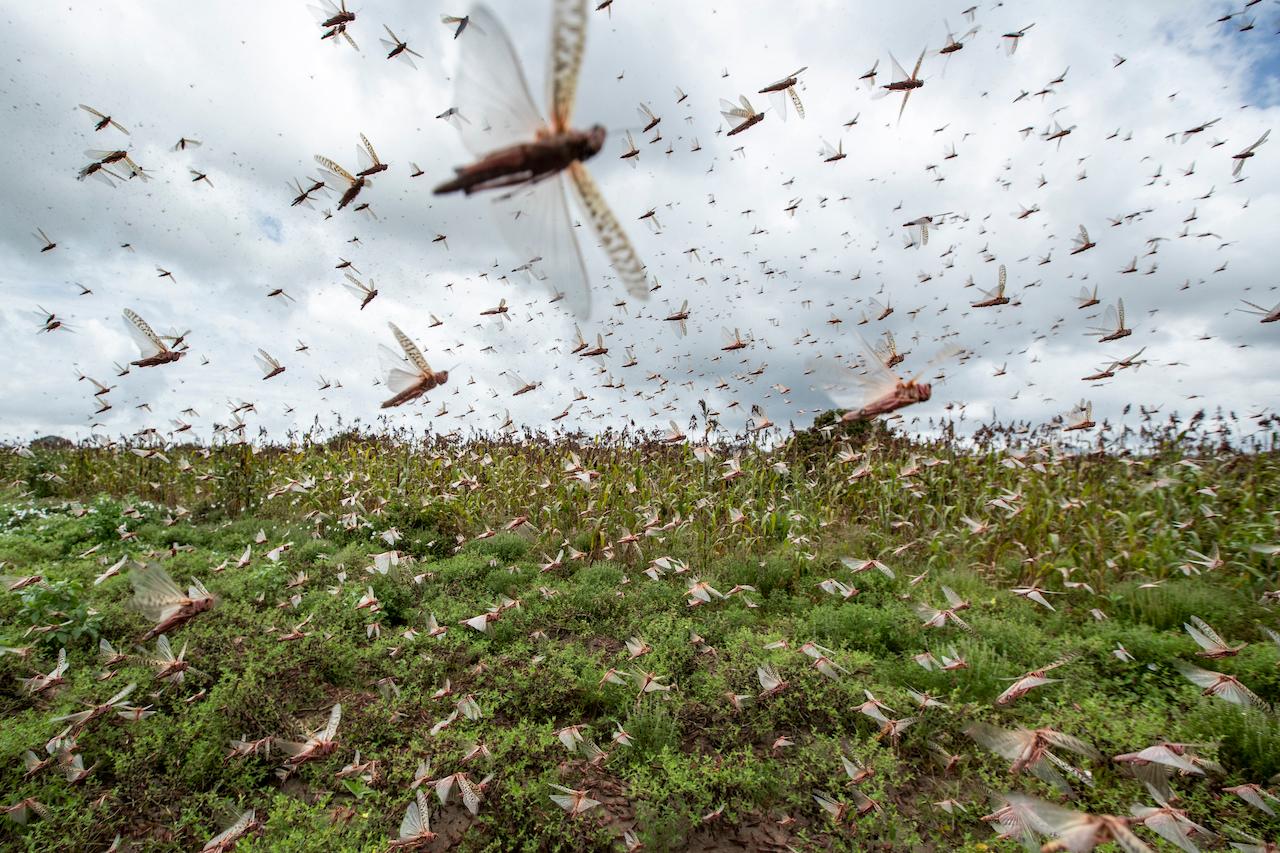Kenya braces for second wave – of ravenous locusts
The unstoppable, voracious swarms destroy all crops and pasture in their path, exacerbating food shortages.
The United Nations Food and Agriculture Organization (FAO) is warning that a resurgence of the plagues of locusts that devastated Kenya earlier in the year will aggravate food shortages currently affecting the population.
It said that almost 25 million people are already suffering from severe food shortages caused by previous plagues devouring crops in their path.
Desert locusts are considered the most destructive migratory pest in the world, devouring large areas of crops as well as livestock pastures. Clouds of them appear suddenly and carpet the countryside then fly off leaving bare soil and stalks behind them.
The first wave hit Kenya earlier this year, unleashing a trail of destruction and savaging food production in many parts of the country.
And now, while the rest of the world worries about further waves of Covid-19, Kenya is facing a second wave of locusts on a rarely seen scale.
In August, the FAO said the year’s previous desert locust infestation was under control, and applauded Kenya’s efforts in fighting the plague.
But the UN agency is now warning that the locust crisis could re-escalate in December as recent strong winds have been carrying mature swarmlets from southern Somalia into Kenya.
“Although some of the swarmlets that have reached Kenya may have laid eggs before their arrival, there remains a risk of further egg-laying in sandy areas that have seen recent rainfalls,” said the agency, adding that if this is the case, hatching and hopper swarms can be expected by mid-December.
It noted that breeding is continuing in neighbouring countries Somalia and Ethiopia where bands of hoppers – non-flying, nymphal stage locusts – are taking over huge areas, and a new generation of immature swarms could start forming soon and flying into Kenya, heading straight for anything and everything they can eat.
Subscribe to our newsletter
To be updated with all the latest news and analyses daily.
